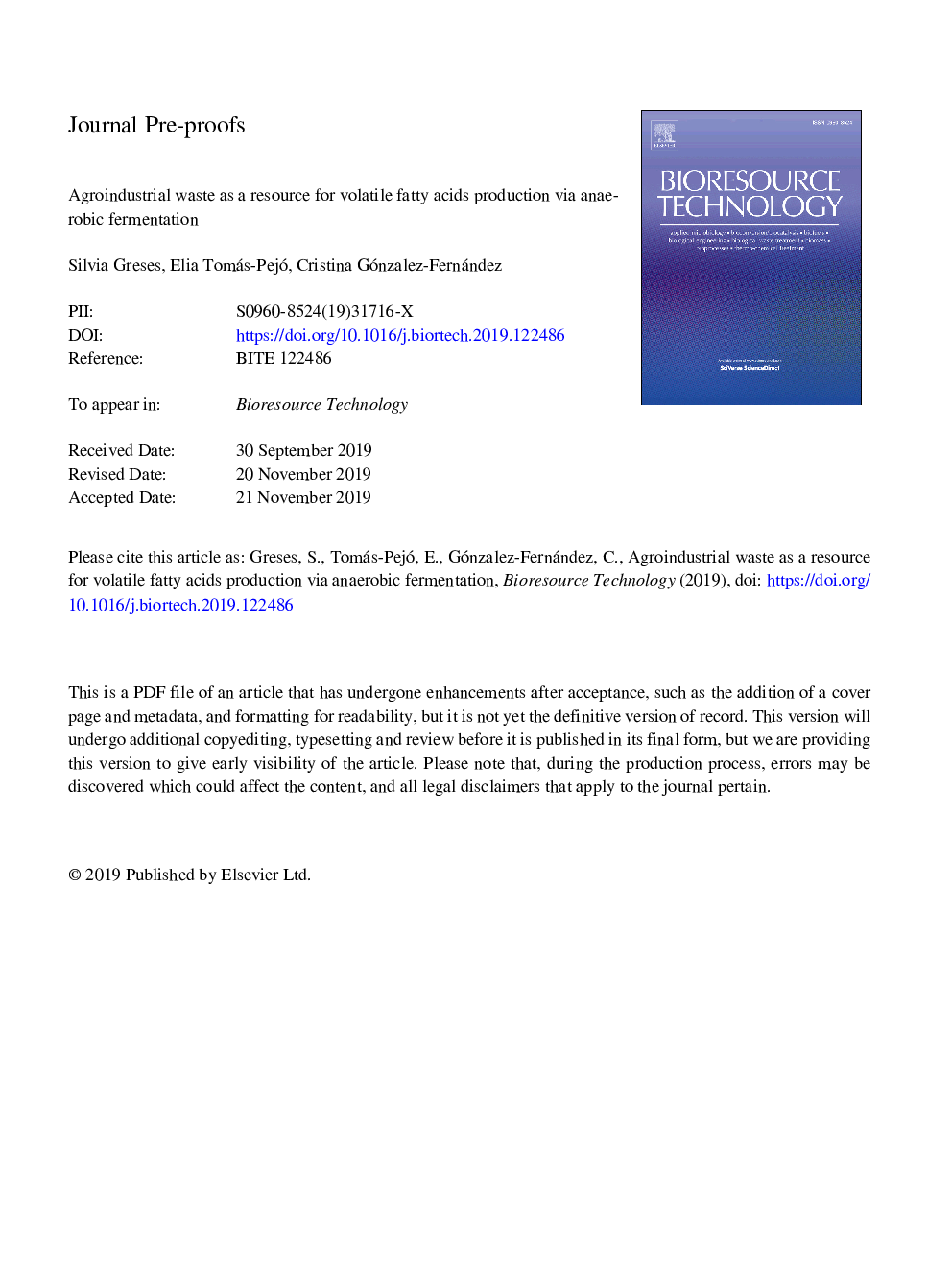| Article ID | Journal | Published Year | Pages | File Type |
|---|---|---|---|---|
| 13444755 | Bioresource Technology | 2020 | 35 Pages |
Abstract
This study evaluated the feasibility of the anaerobic digestion as a sustainable valorisation strategy for volatile fatty acids production from agroindustrial waste (cucumber, tomato and lettuce). High bioconversion efficiencies were reached by operating the reactors at 25 °C, 3 g VS·dâ1·Lâ1 with pH adjustment. Cucumber fermentation achieved the highest bioconversion (52.6%), whereas tomato degradation was the least efficient bioprocess (40.1%) due to the low pH (5.6) that partially inhibited the hydrolytic and acidogenic activities. In all cases, carboxylic acid profiles were mainly composed of volatile fatty acids with even carbon number. The developed microbial community exhibited high hydrolytic and acidogenic activities associated to carbohydrates degradation. This microbial population was dominated by Firmicutes phylum and showed a lack of acetogenic bacteria related with CH4 production, resulting in a remarkably high VFAs accumulation.
Related Topics
Physical Sciences and Engineering
Chemical Engineering
Process Chemistry and Technology
Authors
Silvia Greses, Elia Tomás-Pejó, Cristina Gónzalez-Fernández,
